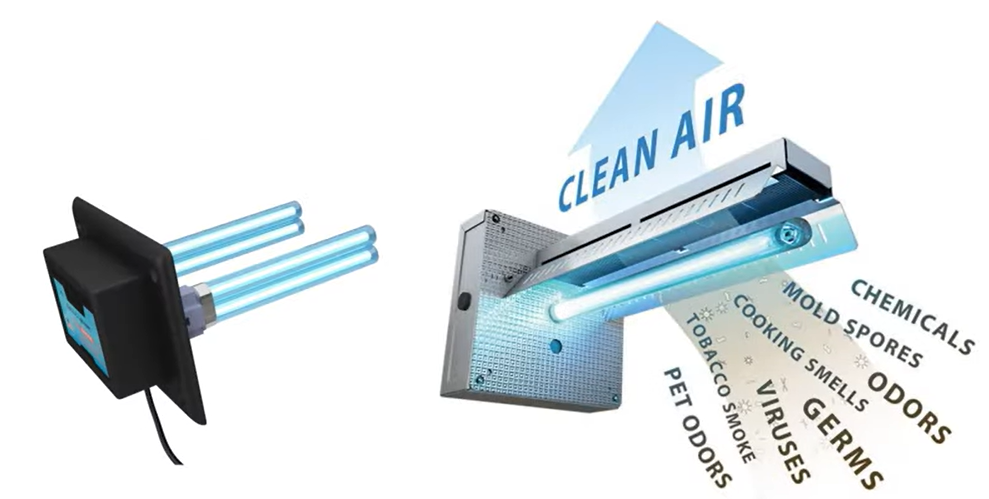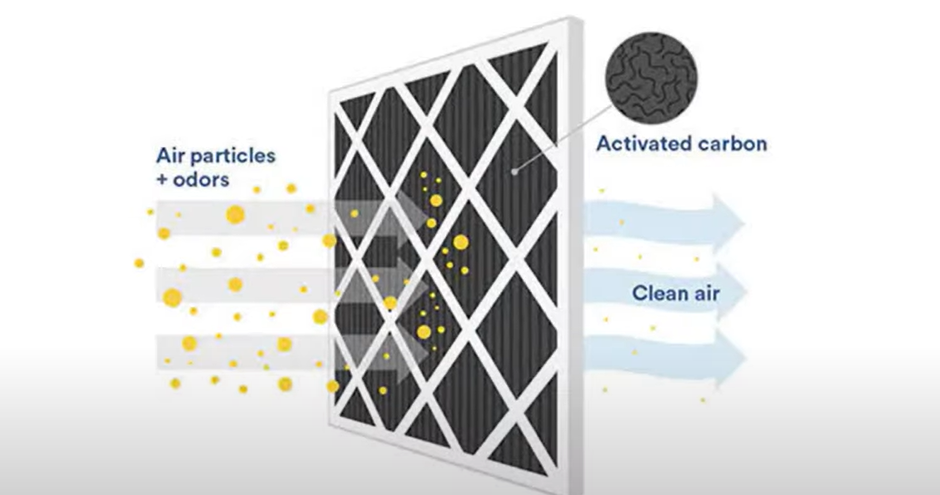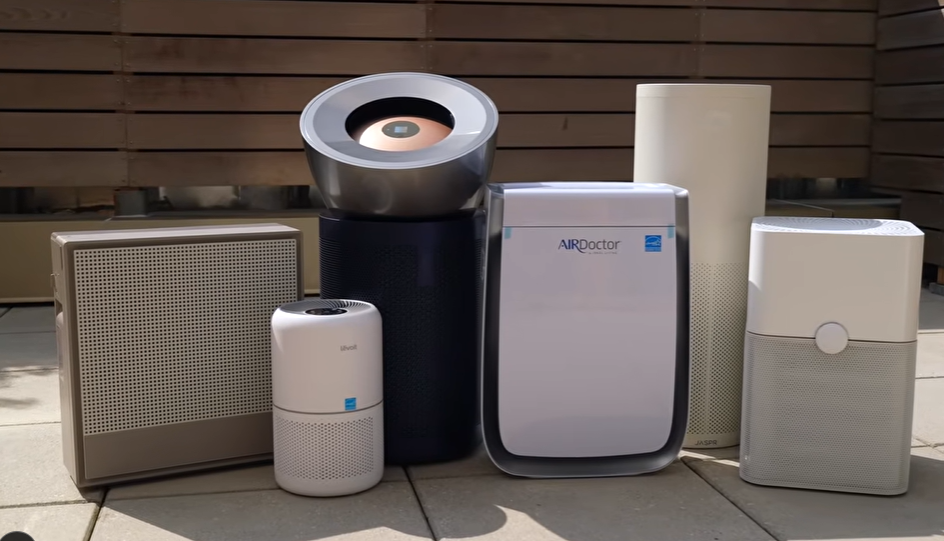The short answer is: it depends. While a single air purifier can improve air quality, relying on just one to achieve whole house air purification is often insufficient. This guide explores factors influencing portable air purifier effectiveness for an entire home, alternatives like a central air purifier system, and strategies for achieving optimal whole house air quality.

Factors Influencing Single Air Purifier Performance
Several elements determine if a single unit can deliver multi-room air purification effectively.
Air Purifier Square Footage Coverage
The primary factor is the air purifier square footage coverage. Manufacturers specify the room size their products are designed for. Using an air purifier rated for 500 sq ft in a 2000 sq ft home will yield minimal results. The unit simply lacks the capacity to filter the air in such a large area.
Airflow and Circulation
Even within the designated square footage, airflow is crucial. Obstructions like furniture can hinder air circulation, creating “dead zones” where pollutants linger. Poor ventilation within the house as a whole compounds the problem.
Pollutant Type and Source
The type and source of pollutants matter. An air purifier might effectively capture dust and pollen but struggle with volatile organic compounds (VOCs) released from new furniture or cleaning products. Concentrated pollutant sources in specific rooms can also overwhelm a single unit.
Home Layout and Design
Open-concept homes might benefit more from a single powerful air purifier than homes with many small, closed-off rooms. Walls and doors impede airflow, preventing the unit from adequately cleaning the air throughout the house.
Filter Type and Maintenance
The type of filter and its maintenance are essential. A HEPA filter captures particulate matter, while an activated carbon filter adsorbs odors and gases. Neglecting filter replacement diminishes performance, regardless of the unit’s size.
The Limitations of Relying on One Air Purifier
Despite technological advancements, a single air purifier presents limitations in achieving air purifier for entire home.

- Insufficient Coverage: Covering the square footage of an entire house typically requires multiple units.
- Uneven Air Quality: Rooms furthest from the air purifier will experience less improvement in whole house air quality.
- Limited Pollutant Removal: A single filter type may not address all pollutants present throughout the home.
- Constant Operation at High Speed: To compensate for limited coverage, the unit may need to run continuously at high speed, increasing noise and energy consumption.
Central Air Purifier System: A Whole-House Solution
A central air purifier system integrates with your existing HVAC system, offering a comprehensive approach to whole house air purification.
How Central Air Purifiers Work
These systems filter air as it circulates through the HVAC ducts. They can utilize various filtration technologies, including:
- HEPA Filters: Capture particulate matter like dust, pollen, and pet dander.
- Activated Carbon Filters: Adsorb odors, gases, and VOCs.
- UV-C Light: Kills bacteria, viruses, and mold spores.
- Electrostatic Precipitators: Charged plates attract and capture airborne particles.
Benefits of a Central System
- Comprehensive Coverage: Filters air throughout the entire house.
- Quiet Operation: Typically quieter than multiple portable units.
- Convenient Maintenance: Filters are usually larger and require less frequent replacement.
- Improved HVAC Efficiency: Cleaner air can improve the efficiency of your HVAC system.
Drawbacks of a Central System
- Higher Initial Cost: Installation can be more expensive than buying portable units.
- Professional Installation: Requires professional installation and maintenance.
- HVAC System Compatibility: Not all HVAC systems are compatible with all central air purifiers.
- Potential Airflow Restriction: Some systems can restrict airflow, reducing HVAC efficiency.
Strategies for Improving Whole-House Air Quality
If a central air purifier system isn’t feasible, combining a portable air purifier effectiveness with other strategies can enhance whole house air quality.
Multi-Purifier Placement
Strategically placing multiple air purifiers throughout the house can address coverage limitations. Consider placing units in:
- Bedrooms: Where you spend a significant amount of time.
- Living Areas: Where family members gather.
- Kitchen: Where cooking generates pollutants.
- Areas near pollutant sources: Such as pet areas or smoking areas.
Optimizing Airflow
Ensure good air circulation by:
- Opening windows and doors regularly for ventilation.
- Using fans to circulate air.
- Keeping furniture away from air vents.
- Ensuring proper HVAC system maintenance.
Addressing Pollutant Sources
Minimizing pollutant sources can reduce the burden on air purifiers.
- Use low-VOC paints and cleaning products.
- Ventilate while cooking.
- Control humidity to prevent mold growth.
- Regularly clean and vacuum to remove dust and allergens.
HVAC Air Purifier Enhancement
Consider adding an enhanced filter to your existing HVAC air purifier system. High-MERV filters can capture smaller particles than standard filters, improving overall air quality.

MERV ratings (Minimum Efficiency Reporting Value) indicate a filter’s ability to capture particles. Higher MERV ratings indicate better filtration.
| MERV Rating | Particle Size Captured | Common Applications |
|---|---|---|
| 1-4 | Large particles (dust, pollen) | Basic residential filters |
| 5-8 | Medium particles (mold spores, pet dander) | Improved residential filters |
| 9-12 | Small particles (fine dust) | Better residential & commercial filters |
| 13-16 | Very small particles (bacteria, viruses) | Hospital & cleanroom filters |
Note: Using a very high-MERV filter in an HVAC system not designed for it can restrict airflow and damage the system. Consult an HVAC professional before upgrading your filter.
Choosing the Right Air Purifier for Your Needs
Selecting an appropriate air purifier depends on factors like room size, pollutant type, and budget.

Evaluating Air Purifier Specifications
- CADR (Clean Air Delivery Rate): Measures the volume of clean air an air purifier produces. Higher CADR values indicate better performance.
- Filter Type: Choose filters appropriate for the pollutants you want to remove (HEPA for particles, activated carbon for odors and gases).
- Square Footage Coverage: Select a unit rated for the size of the room where it will be used.
- Noise Level: Consider the noise level, especially for bedrooms.
- Energy Consumption: Look for energy-efficient models.
- Maintenance Requirements: Check the filter replacement frequency and cost.
Portable Air Purifier Effectiveness Comparison
| Feature | HEPA Air Purifier | Activated Carbon Air Purifier | UV-C Air Purifier |
|---|---|---|---|
| Primary Use | Particle removal (dust, pollen, pet dander) | Odor and gas removal (VOCs, smoke) | Disinfection (bacteria, viruses, mold spores) |
| Effectiveness | High for particles | Moderate to high for odors and gases | Effective for disinfection at close range |
| Limitations | Ineffective against odors and gases | Ineffective against particles | Limited effectiveness against particles and gases |
| Maintenance | Filter replacement | Filter replacement | Bulb replacement |
Cost Analysis: Portable vs. Central
| System | Initial Cost | Running Costs (Electricity & Filters) | Coverage | Maintenance |
|---|---|---|---|---|
| Portable Units | Lower | Moderate | Room-based | More frequent |
| Central System | Higher | Lower | Whole-house | Less frequent |
Fathoming Air Purifier Technologies
Various technologies enhance air purification, but not all are created equal.
HEPA Filtration: The Gold Standard
HEPA (High-Efficiency Particulate Air) filters capture at least 99.97% of particles 0.3 microns in diameter. This makes them highly effective against dust, pollen, pet dander, mold spores, and other common allergens.
Activated Carbon Filtration: Absorbing Odors and Gases
Activated carbon filters adsorb odors, gases, and VOCs. The carbon is treated to increase its surface area, allowing it to trap more pollutants.
UV-C Light: Disinfection Potential
UV-C light can kill bacteria, viruses, and mold spores. However, it’s most effective at close range and requires sufficient exposure time to be effective.
Ionic Air Purifiers: A Controversial Option
Ionic air purifiers emit ions that attach to particles, making them heavier and causing them to fall out of the air. While they can reduce airborne particles, they also generate ozone, a lung irritant. Many experts advise against using ionic air purifiers.
FAQ
Q: What is the ideal air purifier for a large, open-concept space?
A: For a large, open-concept space, choose an air purifier with a high CADR rating and a square footage coverage that exceeds the space’s size. Consider multiple units for optimal coverage.
Q: Can I use a single air purifier for my entire apartment?
A: Possibly, if your apartment is relatively small and open. However, a single air purifier coverage might be insufficient for larger or multi-room apartments.
Q: Who is best suited for a central air purifier system?
A: Homeowners with existing ducted HVAC systems who want comprehensive whole house air purification are well-suited for central systems.
Q: How often should I replace air purifier filters?
A: Filter replacement frequency depends on the filter type and usage. Check the manufacturer’s recommendations for specific guidelines.
Q: What are the signs that my air purifier isn’t working effectively?
A: Signs include persistent odors, visible dust accumulation, allergy symptoms, and reduced airflow from the unit.
Achieving optimal whole house air quality requires careful consideration of factors like room size, pollutant type, and air purifier capabilities. While a single unit can offer some improvement, a central air purifier system or a combination of strategically placed portable units is often necessary for comprehensive coverage.
My name is Carlos Gadd, and I am the creator of AirPurityGuide.com.. With a passion for footwear, I share my experiences, insights, and expertise about shoes. Through my blog, I aim to guide readers in making informed decisions, finding the perfect pair, and enhancing their footwear knowledge. Join me on this journey to explore everything about shoes!